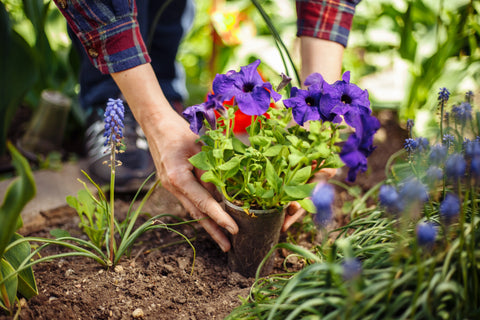Most people get indoor plants to add life to their space, but sometimes, keeping them in top shape requires maintenance. Unlike outdoor greenery, indoor plants do not demand frequent pruning. An occasional trim would work wonders, from snipping off dead leaves to reshaping unruly growth and helping a leggy plant bounce back. Done right, it keeps your plants growing without causing unnecessary harm. Let's explore how to prune your indoor companions with care and confidence.
When to Trim Your Houseplants
The perfect time to prune is usually early in the growing season. Most varieties fall in late winter or early spring. However, some woody indoor plants, such as fiddle-leaf figs and dracaenas, need their leaves and branches dead and pruned year-round. The right time for pruning flowering plants would be after blooming. Pruning them before that time means cutting off unopened buds that would otherwise become flowers.
What You’ll Need
Tools
- Pruning shears
- Kitchen scissors
- Gardening gloves (optional)
Materials
- An overgrown or mature houseplant
Instructions
Follow these steps to prune your houseplants effectively and keep them healthy and well-maintained.
Observe the Plant
Step back a bit and consider your houseplant like a tree. Is there any unevenness, spindly growth, yellowing, or wilting? Check for newer buds (you will often find them near the nodes at which stems meet leaves) or any other indications of some new development. This will help your approach to pruning.
Determine Your Tools
Choose the right gardening supplies according to your plant requirements. Pruning shears are perfect for thick branches of indoor trees like rubber plants or monstera. Opt for more delicate or slender stems with kitchen scissors, as they can make cleaner cuts. Minimizing a piece of damage done to a plant will be achieved using the right tool.
Remove Dead Matter
Remove dead or decaying leaves and stems first. Then, for rotted ends close to the roots, pull them gently out. Let the soil dry before watering again to avoid further root rot. Cleaning all dead matter gives a new start to your plant.
Deadhead the Plant
For flowering houseplants, spent blooms should be pinched off or clipped as closely to the main stem as possible. Not only does this keep the plant free of messy, spent blooms, but it also causes energy to be redirected from just flowering to healthy growth and encourages new blooms in the future, keeping the plant nice and healthy. Deadheading for plants is very important.
Make Your Cuts
Always, cuts that you make should not be more than half or a third of any pruned shrub because it is terrible for it. For smaller-sized stems, close it up to the main stem. Cutting should be done just above a leaf node to promote growth. Cuts should not be made more than a quarter to a third of the plant so that it won't be stressed. In this way, you will have the desired healthy and well-balanced plant.
Knowledge about Pruning and Propagation Techniques
Cutting off deadheads is a straightforward method of pruning. The follow-up of deadheaded flowers generates energy in newer growth. Wilting flowers draw energy from the plant. Deadheading supports the health of the entire houseplant while extending its blooming period.
Clean tools should always be used for pruning. A cut is accompanied by exposure to plant infection. Hence, pruning must be done with sharp, clean instruments. The disinfection of tools used for pruning should be done after every usage using a mild bleach-and-water solution for minimal indication of the infection.
Propagation does not come from a pruning practice. One can stick many kinds of houseplant cuttings in water for rooting and transplant later to the soil for further growth. For succulent clippings, it's even easier: just stick them into moist soil, and they'll start putting on growth in a matter of weeks. You will have lots of new, lovely plants.
In-house Vine Care
More attention must be given to pruning vines than we usually see for simple house plants. Most such trailing plants grow best when pruned and shaped against some support structure and with stems trimmed back to keep the true shape as much as they can. These vigorous growers may be cut back more significantly in spring or summer to offer a downward control. Regular attention helps maintain the beauty and orderliness of vines.
Minimal Pruning House Plants
Some houseplants don't need trimming; in some exceptional cases, they should be left entirely unpruned. For example, palm trees and Norfolk Island pines grow from a central syngenic dominant bud and do not lay down secondary buds. Destroying this bud could cause the plant to die, making such cuts undesirable.
Like other flowering plants, orchids are also the types that do not require much pruning. Usually, these plants only need the trimming of dead flower spikes down to the base, where they join with the leaves. Just wait; a few months later, new blooms appear with no further intervention.
How to Buy Plants from Eureka Farms
Eureka Farms provides an extensive collection of landscaping trees, fruit trees, palm trees, and one of the largest collections of houseplants. If you want to upgrade curb appeal with beautiful topiary trees or change your porch into an inviting space, Eureka Farms is your go to place. We pack and ship plants with utmost care, making sure they reach you in perfect condition, no matter where you are in the country. Want to bring natural beauty into your work-from-home space? Or easy-care indoor plants? We have it all! Plants can help improve air quality and lift your mood while adding a touch of greenery to your environment. Happy planting!



